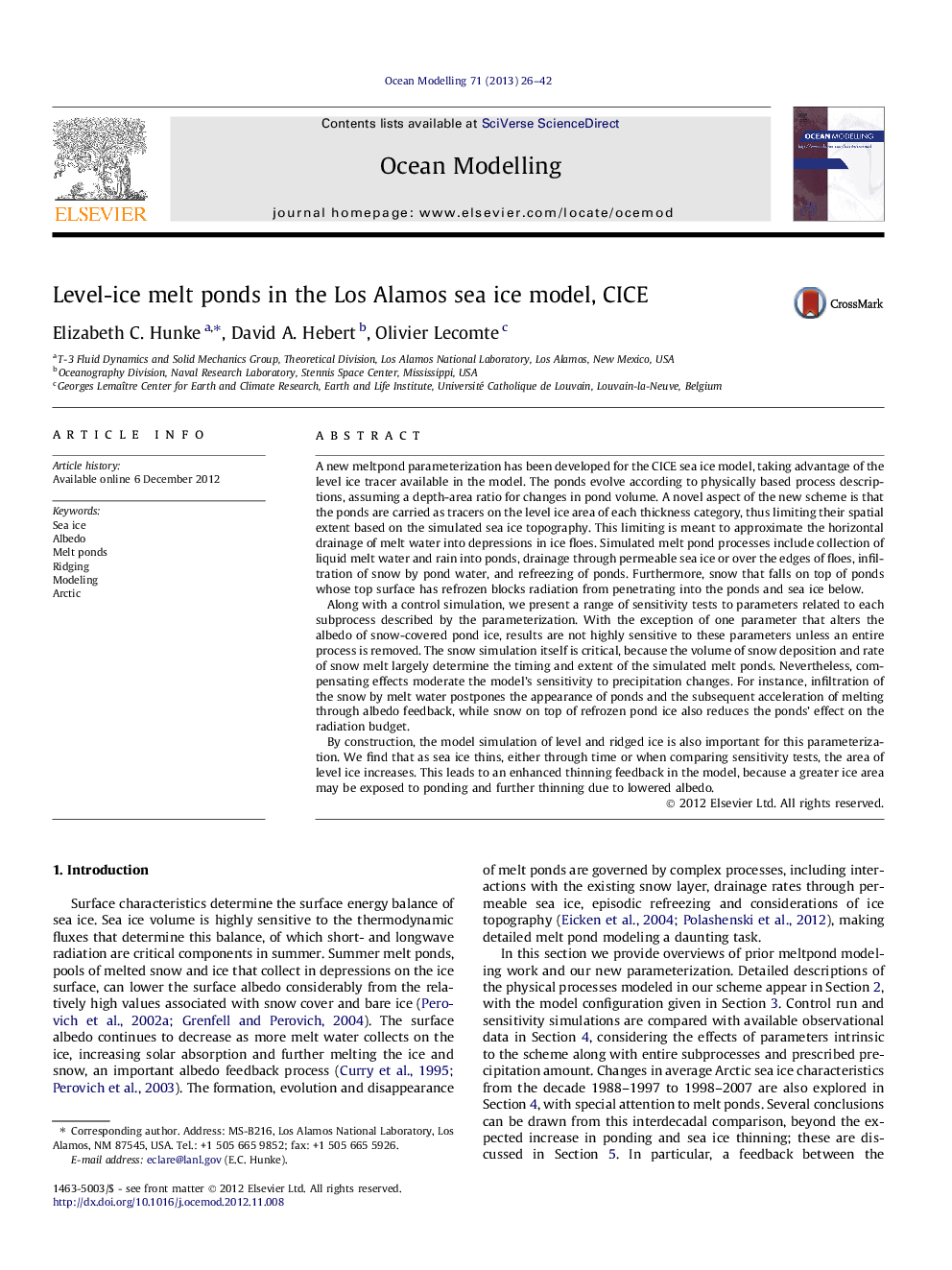| Article ID | Journal | Published Year | Pages | File Type |
|---|---|---|---|---|
| 6388261 | Ocean Modelling | 2013 | 17 Pages |
A new meltpond parameterization has been developed for the CICE sea ice model, taking advantage of the level ice tracer available in the model. The ponds evolve according to physically based process descriptions, assuming a depth-area ratio for changes in pond volume. A novel aspect of the new scheme is that the ponds are carried as tracers on the level ice area of each thickness category, thus limiting their spatial extent based on the simulated sea ice topography. This limiting is meant to approximate the horizontal drainage of melt water into depressions in ice floes. Simulated melt pond processes include collection of liquid melt water and rain into ponds, drainage through permeable sea ice or over the edges of floes, infiltration of snow by pond water, and refreezing of ponds. Furthermore, snow that falls on top of ponds whose top surface has refrozen blocks radiation from penetrating into the ponds and sea ice below.Along with a control simulation, we present a range of sensitivity tests to parameters related to each subprocess described by the parameterization. With the exception of one parameter that alters the albedo of snow-covered pond ice, results are not highly sensitive to these parameters unless an entire process is removed. The snow simulation itself is critical, because the volume of snow deposition and rate of snow melt largely determine the timing and extent of the simulated melt ponds. Nevertheless, compensating effects moderate the model's sensitivity to precipitation changes. For instance, infiltration of the snow by melt water postpones the appearance of ponds and the subsequent acceleration of melting through albedo feedback, while snow on top of refrozen pond ice also reduces the ponds' effect on the radiation budget.By construction, the model simulation of level and ridged ice is also important for this parameterization. We find that as sea ice thins, either through time or when comparing sensitivity tests, the area of level ice increases. This leads to an enhanced thinning feedback in the model, because a greater ice area may be exposed to ponding and further thinning due to lowered albedo.
⺠We have developed a new parameterization for melt ponds in the sea ice model CICE. ⺠Ponds are treated as tracers on the undeformed ice area of each thickness category. ⺠Melt pond processes are simulated using physically based descriptions. ⺠Level ice and pond area increase as sea ice thins, enhancing ice thinning. ⺠Shading by snow partially compensates for the effects of ponds on sea ice volume.
